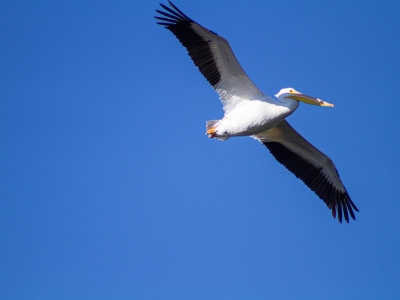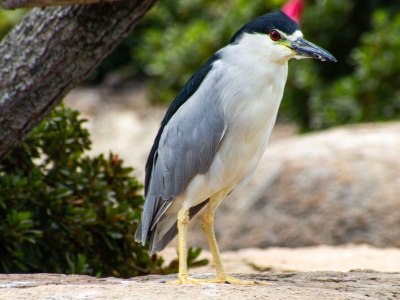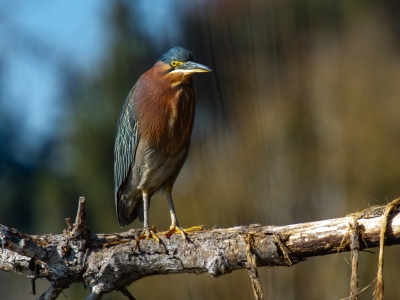The Pelecaniformes are an order of medium-sized and large waterbirds found worldwide. As traditionally—but erroneously—defined, they encompass all birds that have feet with all four toes webbed. Hence, they were formerly also known by such names as totipalmates or steganopodes. Most have a bare throat patch (gular patch), and the nostrils have evolved into dysfunctional slits, forcing them to breathe through their mouths. They also have a pectinate nail on their longest toe. This is shaped like a comb and is used to brush out and separate their feathers. They feed on fish, squid, or similar marine life. Nesting is colonial, but individual birds are monogamous. The young are altricial, hatching from the egg helpless and naked in most. They lack a brood patch.
 American White Pelican
American White Pelican The American white pelican (Pelecanus erythrorhynchos) is a large aquatic soaring bird from the order Pelecaniformes. It breeds in interior North America, moving south and to the coasts, as far as Costa Rica, in winter.
 Black-Crowned Night Heron
Black-Crowned Night Heron The Black-crowned Night Heron (Nycticorax nycticorax), or black-capped night-heron, commonly shortened to just night-heron in Eurasia, is a medium-sized heron found throughout a large part of the world, including parts of Europe, Asia, and North and South America.
The black-crowned night-heron was formally described by the Swedish naturalist Carl Linnaeus in 1758 in the tenth edition of his Systema Naturae. He placed it with herons, cranes and egrets in the genus Ardea and coined the binomial name Ardea nicticorax. It is now placed in the genus Nycticorax that was introduced in 1817 by the English naturalist Thomas Forster for this species.
These birds stand still at the water's edge and wait to ambush prey, mainly at night or early morning. They primarily eat small fish, leeches, earthworms, mussels, squid, crustaceans (such as crayfish), frogs, other amphibians, aquatic insects, terrestrial insects, lizards, snakes, small mammals (such as rodents), small birds, eggs, carrion, plant material, and garbage and refuse at landfills. They are among the seven heron species observed to engage in bait fishing; luring or distracting fish by tossing edible or inedible buoyant objects into water within their striking range – a rare example of tool use among birds. During the day they rest in trees or bushes. N. n. hoactli is more gregarious outside the breeding season than the nominate race.
 Green Heron
Green Heron The Green Heron (Butorides virescens) is a small heron of North and Central America. Butorides is from Middle English butor "bittern" and Ancient Greek -oides, "resembling", and virescens is Latin for "greenish".
The green heron is relatively small; adult body length is about 44 cm (17 in). The neck is often pulled in tight against the body. Adults have a glossy, greenish-black cap, a greenish back and wings that are grey-black grading into green or blue, a chestnut neck with a white line down the front, grey underparts and short yellow legs. The bill is dark with a long, sharp point. Female adults tend to be smaller than males, and have duller and lighter plumage, particularly in the breeding season. Juveniles are duller, with the head sides, neck and underparts streaked brown and white, tan-splotched back and wing coverts, and greenish-yellow legs and bill. Hatchlings are covered in down feathers, light grey above, and white on the belly.